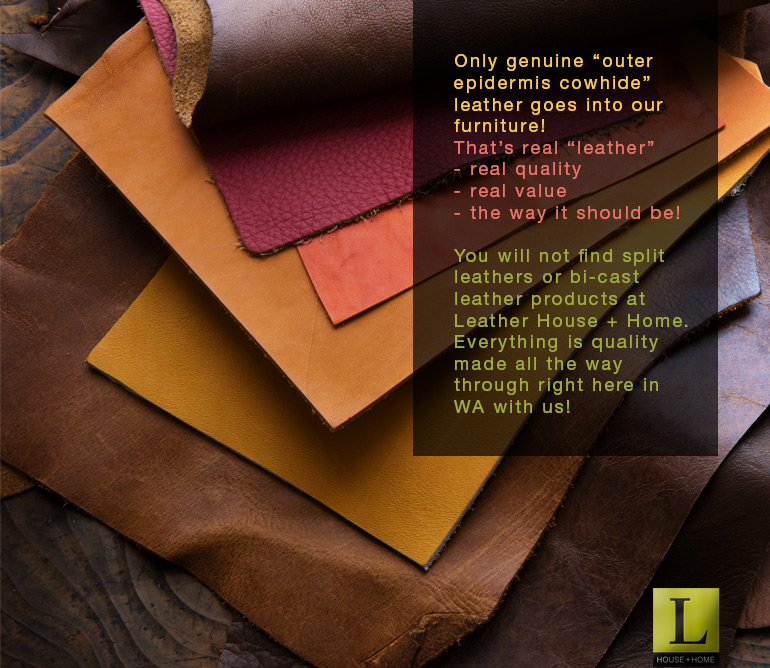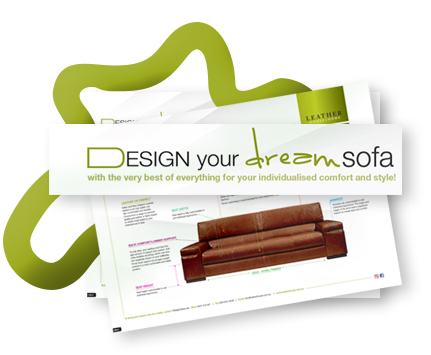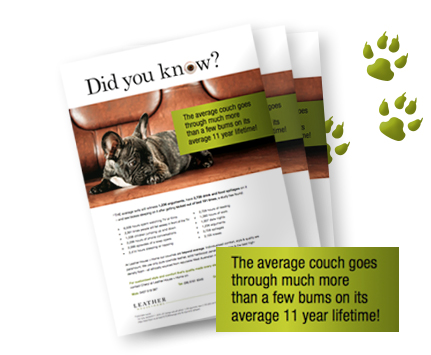Leather Information - Get the facts before buying your new leather lounge set
Do you know what you are buying? Let’s keep it short and clear. Knowledge of leather will save you buying vinyl that looks like leather or inferior leather patched together and treated to conceal it.
Firstly, leather comes from animal hides that are tanned and processed to become a material of beauty, that's pliable and strong and that smells and feels good.
The hide is split into two main layers to produce leather. These are known as top grain leather and split leather. The outer layer that includes, the epidermis, is the top grain leather while the lower layer is the softer, less durable corium layer. Quality leather upholstery should not be made from the split layer, but it is. Parts of a lounge, like the back and sides, are made from this leather. Lounges and recliners are sold everyday with this leather which won't last the 20 plus years that quality leather should. This leather can be buffed to become suede and can be used as fabric for upholstery, but should not be sold as leather.
Buffed top grain leather is called Nubuck Leather and should not be confused with suede. The hides are treated in different tanneries and some tanneries carry internationallly recognized certificates of quality and environment. Where is it tanned? What is under the leather, the sofa frame and the foam?
Top grain leathers suitable for furniture can be classified in 3 main groups:
- Aniline: This leather has been dyed with aniline, a clear penetrating dye. Marks on the hide are not covered with pigmentation, which makes for beautiful, natural and rare leather. It is rare and is the most expensive leather because it comes from very pampered cows in parts of the world where the environment protects their skin against marks from cuts, scratches, salt, bites, burns and weathering. The big drawback is that this leather has little resistance to soiling, staining and sunlight.
- Semi-Aniline: These are leathers that are dyed in penetrating aniline dyes and can be done in many colours. The addition of a protective coating protects the leather against fading and soiling. The natural top grain is left intact and they still hold much of the leather softness.
- Corrected Grain Leathers: This leather is buffed to hide the marks and then embossed to restore a natural-looking grain pattern.
A protective coating and colouring is added to protect the leather. It is obviously lower in cost than the aniline leathers, but a big plus is that it's very resistant to soiling, staining and fading.
There is alot of information about leather, in addition to the above, that we've not covered here. At Leather House + Home, we can help you find this leather information, or maybe give you the benefit of our experience.
<








